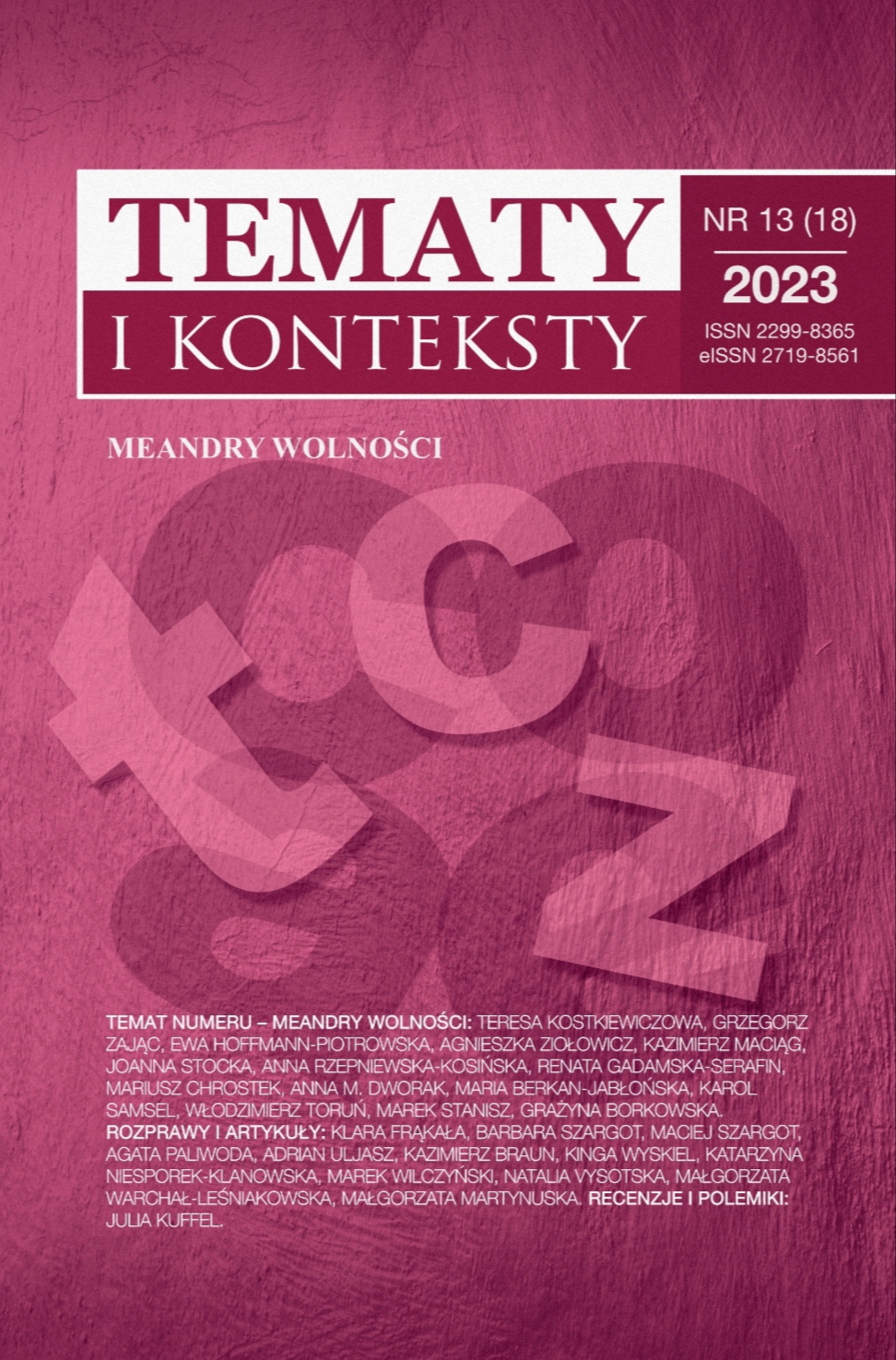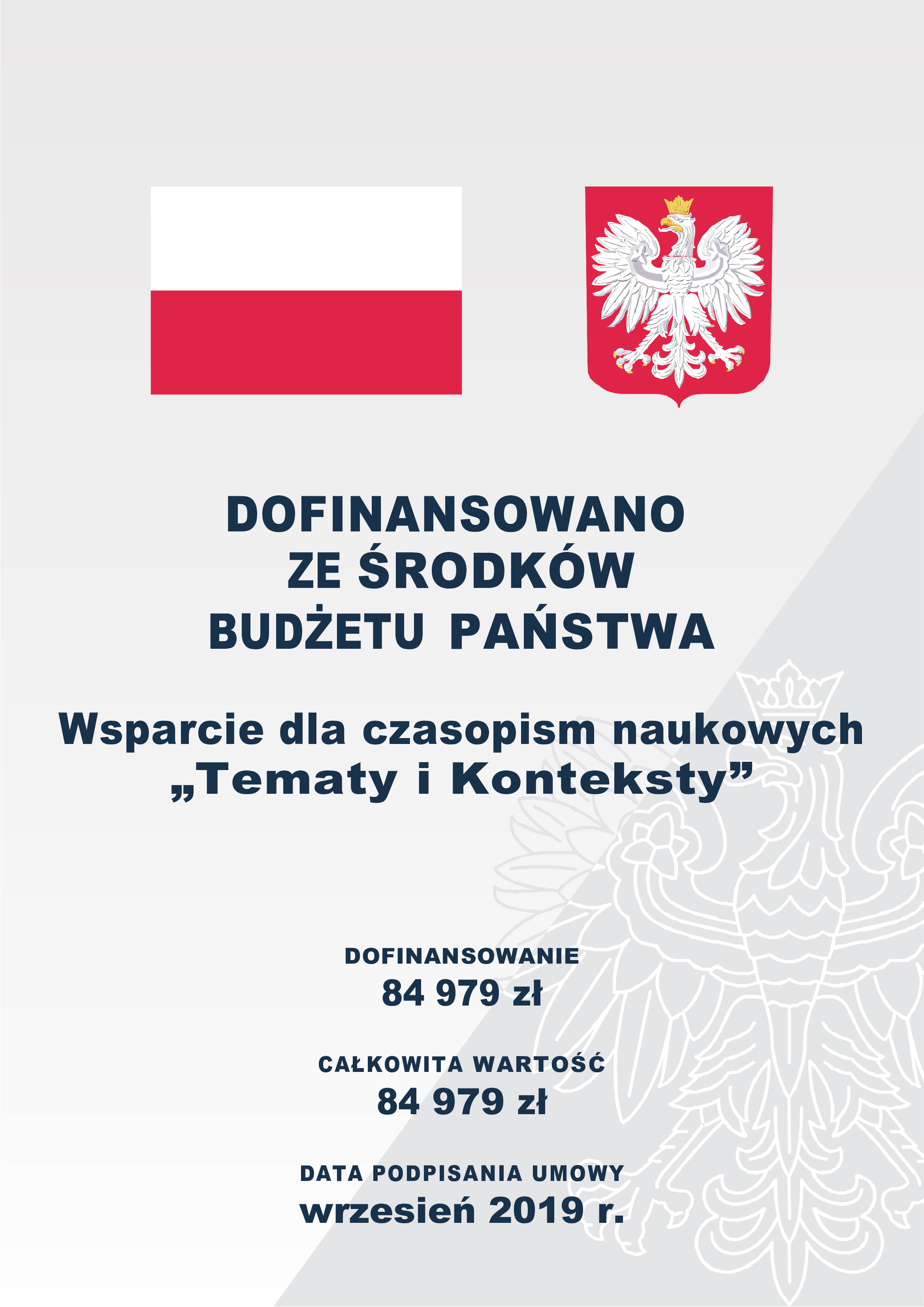Karin Slaughter’s Crime Novel "Blindsighted" as a Southern Forensic Thriller
DOI:
https://doi.org/10.15584/tik.2023.26Keywords:
crime fiction, forensic thriller, scientific evidence, American SouthAbstract
The forensic thriller has emerged as a significant subgenre of crime fiction that depicts the work of medical examiners, coroners, forensic pathologists, and anthropologists who analyze scientific evidence. Forensic investigators do not engage directly in pursuing the criminal; instead, they interpret the physical evidence collected from the victim's body and the crime scene. The popularity of forensic fiction, film, and TV series has created the general assumption that criminalistics has become a routine police procedure. This article presents Karin Slaughter's novel Blindsighted as an example of the Southern forensic thriller. The American writer Karin Slaughter is the author of crime stories and thrillers set in the American South. Her Grant County series consists of six crime novels, beginning with Blindsighted and followed by Kisscut, A Faint Cold Fear, Indelible, Faithless, and Beyond Reach. The essay introduces the main qualities of a forensic thriller and highlights the novel's generic characteristics. Then, Blindsighted is analyzed within the paradigm of Southern regional literature, with its distinctive qualities and religious imagery.
Downloads
References
Anušauskaite, Migle, The Role of the Body in Forensic Crime Fiction, “Acta Academiae Vilnensis”, Vol. 80-81, 2016, 135-144.
Arntfield, Michael, Gothic Forensics: Criminal Investigative Procedure in Victorian Horror and Mystery, Palgrave Macmillan, 2016.
Ascari, Maurizio, A Counter – History of Crime Fiction: Supernatural, Gothic, Sensational, New York: Palgrave Macmillan, 2007.
Avanzas Álvarez, Elena, Forensic Science and Forensic Thrillers: A Feminist Perspective on the Re/Presentation of the Female Corpse, “HARTS & Minds: The Journal of Humanities and Arts”, Vol. 3, No.1, (Issue 8), 2016, 2-13.
Baskin, Deborah R. and Ira B. Sommers, Crime-Show-Viewing Habits and Public Attitudes Toward Forensic Evidence: The “CSI Effect” Revisited, “The Justice System Journal”, Vol. 31, No. 1, 2010, 97-113.
Bell, David, Anti-Idyll: Rural Horror [in:] Contested Countryside Cultures: Otherness, Marginalization and Rurality, ed. Paul Cloke and Jo Little, London and New York: Routledge, 1997, 91-104.
Bertens, Hans and Theo D’haen, Contemporary American Crime Fiction, New York: Palgrave Macmillan, 2001.
Botting, Fred, Gothic, London and New York: Routledge, 1999.
Cavallaro, Dani, Gothic Vision: Three Centuries of Horror, Terror and Fear, London and New York: Continuum, 2002.
Chou, Jun-nan, Seeing Bones Speaking: The Female Gaze and the Posthuman embodiment in Reichs’s Forensic Crime Fiction, “Concentric: Literary and Cultural Studies”, Vol. 38, No. 1, 2012, 145-169.
Close, Glen, S., Female Corpses in Crime Fiction: A Transatlantic Perspective, London, UK: Palgrave Macmillan, 2018.
Cole, Simon A. and Glenn Porter, The CSI effect, [in:] The Routledge International Handbook of Forensic Intelligence and Criminology, ed. Quentin Rossy, David Décary-Hétu, Oliver Delémont, and Massimiliano Mulone, Routledge, 2017, 112-124.
Czubaj, Mariusz, Etnolog w Mieście Grzechu: Powieść kryminalna jako świadectwo antropologiczne, Gdańsk: Oficynka, 2010.
Dauncey, Sarah, Crime, Forensics, and Modern Science, [in:] A Companion to Crime Fiction, ed. Charles J. Rzepka and Lee Horsley, Malden, MA: Wiley-Blackwell, 2010, 164-174.
Doane, Ashley. (“Woody”), Beyond Color-blindness: (Re)Theorizing Racial Ideology, “Sociological Perspectives”, Vol. 60, No. 5, 2017, 975-991.
Dunant, Sarah, Body Language: A Study of Death and Gender in Crime Fiction, [in:] The Art of Detective Fiction, ed. Warren Chernaik, Martin Swales and Robert Vilain, New York: Palgrave Macmillan, 2000, 10-20.
Evans, Mary, The Imagination of Evil: Detective Fiction and the Modern World, London and New York: Continuum, 2009.
Goddu, Teresa, Gothic America: Narrative, History, and Nation, New York: Columbia University Press., 1997.
Head, Beth, A Normal Pathology? Patricia Cornwell’s Third-Person Novels, [in:] The Millennial Detective: Essays on Trends in Crime Fiction, Film and Television, 1990-2010,
ed. Malcah Effron, Jefferson, North Carolina and London: McFarland & Company, 2011, 36-49.
Page, Graeme, Sharp Objects as Southern Gothic for the Twenty-First Century: A Novel Analysis, “Medium”, 22 January, 2023. Accessed 24 November, 2023. Available on https://medium.com/@graeme-page/sharp-objects-as-southern-gothic-for-the-twenty-first-century-an-analysis-3a189b847dbb.
Palmer, Joy, Tracing Bodies: Gender, Genre, and Forensic Detective Fiction, “South Central Review”, Vol. 18, No. 3/4, 2001, 54-71.
Peach, Linden, Masquerade, Crime and Fiction: Criminal Deceptions, New York: Palgrave Macmillan, 2006.
Penfold-Mounce, Ruth, Corpses, Popular Culture and Forensic Science: Public Obsession with Death, “Mortality”, Vol. 21, No. 1, 2016, 19-35. Available on White Rose Research Online, pp. 1-26. Accessed 2 November, 2021. https://eprints.whiterose.ac.uk/95708/
Schatz, Thomas, Hollywood Genres: Formulas, Filmmaking, and the Studio System. New York: Random House, 1981.
Schmid, David, The Locus of Disruption: Serial Murder and Generic Conventions in Detective Fiction, [in:] The Art of Detective Fiction, ed. Warren Chernaik, Martin Swales and Robert Vilain, New York: Palgrave Macmillan, 2000, 75-89.
Slaughter, Karin, Blindsighted, London: Arrow Books, 2002.
Slaughter, Karin, website. Accessed 13 October, 2021. https://www.karinslaughter.com/bio-1
Smith, Andrew, Gothic Literature, Edinburgh: Edinburgh University Press, 2007.
Steenberg, Lindsay, “A Natural Instinct for Forensics”: Trace Evidence and Embodied Gazes in The Bone Collector, [in:] The Millennial Detective: Essays on Trends in Crime Fiction, Film and Television, 1990-2010, ed. Malcah Effron. Jefferson, North Carolina and London: McFarland & Company, 2011, 112-127.
Wenner Moyer, Melinda, Do Money, Social Status Woes Fuel the U.S. Gun Culture, “Scientific American”, 13 December, 2017. Accessed 24 November, 2023. Available on https://www.scientificamerican.com/article/do-money-social-status-woes-fuel-the-u-s-gun-culture/
Yamane, David, The Sociology of U.S. gun culture, “Sociology Compass”, No 11, 2017, 1-10.
Downloads
Published
How to Cite
Issue
Section
Categories
License
Copyright (c) 2023 Tematy i Konteksty

This work is licensed under a Creative Commons Attribution-NonCommercial-NoDerivatives 4.0 International License.




